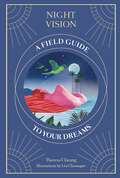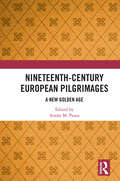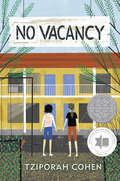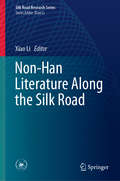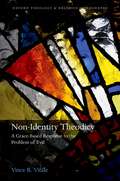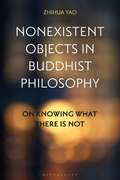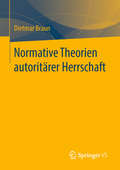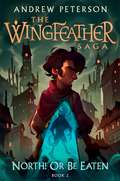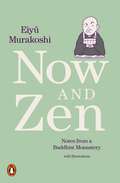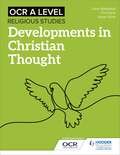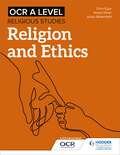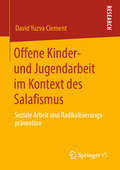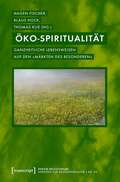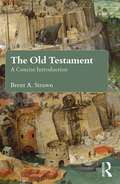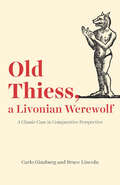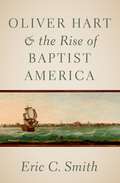- Table View
- List View
Night Lessons in Little Jerusalem
by Rick HeldThe hero of this book was not a saint, nor even a tzadik - the nearest Jewish equivalent - but he was a hero. Someone who risked his own life to make a difference to the life of another. Were his motives selfless? No. He was after all flesh and blood. A man. And a very young one. But life is not black and white. Heroes are not without their flaws. This is his story. Tholdi is a romantic. A musical prodigy whose brilliant future is extinguished when the horror unfolding across Europe arrives at his door. One day he's captivated by the beautiful, mysterious Lyuba who he meets on his sixteenth birthday; the next he wakes to the terrors of war as the Nazi-allied Romanians attack his town of Czernowitz. A ghetto is built to imprison the town's Jews before herding them onto trains bound for the concentration camps of Transnistria. With each passing day, Tholdi and his parents await their turn. And then Fate intervenes, giving them all a reprieve. At the weaving mill Tholdi secures work that spares him. He is elated. Until he discovers the two brothers who run the mill are Nazi collaborators hiding a terrible secret: the threat of transportation remains. When Tholdi sees one of the brothers with Lyuba, he glimpses a way to save himself and his family. But the stakes of his gamble are high. Will Lyuba be the key to their survival, or will Tholdi's infatuation with her become a dangerous obsession that guarantees their death?Night Lessons in Little Jerusalem is an unforgettable debut novel of war, family and love.
Night Vision: A Field Guide to Your Dreams
by Theresa CheungNight Vision is a visual field guide to the richly rewarding art of dream interpretation. Have you ever dreamt that you were flying? That you missed your flight? Or that you got a radical new haircut? Keep a copy of this beautifully illustrated book by your bedside table to help you understand what your dreams are trying to tell you.First you need to learn the techniques, including how to get a good night's sleep, how to recall your dreams and understand the symbolic language through which they unfold. Then you can start interpreting: over 50 common dream themes are explained with accompanying illustrations. Understand what your mind is telling you when you're asleep, and you'll unlock your true potential when you're awake.
Nineteenth-Century European Pilgrimages: A New Golden Age
by Antón M. PazosDuring the Nineteenth-Century a major revival in religious pilgrimage took place across Europe. This phenomenon was largely started by the rediscovery of several holy burial places such as Assisi, Milano, Venice, Rome and Santiago de Compostela, and subsequently developed into the formation of new holy sites that could be visited and interacted with in a wholly Modern way. This uniquely wide-ranging collection sets out the historic context of the formation of contemporary European pilgrimage in order to better understand its role in religious expression today. Looking at both Western Catholic and Eastern Orthodox Europe, an international panel of contributors analyse the revival of some major Christian shrines, cults and pilgrimages that happened after the rediscovery of ancient holy burial sites or the constitution of new shrines in locations claiming apparitions of the Virgin Mary. They also shed new light on the origin and development of new sanctuaries and pilgrimages in France and the Holy Land during the Nineteenth Century, which led to fresh ways of understanding the pilgrimage experience and had a profound effect on religion across Europe. This collection offers a renewed overview of the development of Modern European pilgrimage that used intensively the new techniques of organisation and travel implemented in the Nineteenth-Century. As such, it will appeal to scholars of Religious Studies, Pilgrimage and Religious History as well as Anthropology, Art, Cultural Studies, and Sociology.
Nineteenth-Century European Pilgrimages: A New Golden Age
by Antón M. PazosDuring the Nineteenth-Century a major revival in religious pilgrimage took place across Europe. This phenomenon was largely started by the rediscovery of several holy burial places such as Assisi, Milano, Venice, Rome and Santiago de Compostela, and subsequently developed into the formation of new holy sites that could be visited and interacted with in a wholly Modern way. This uniquely wide-ranging collection sets out the historic context of the formation of contemporary European pilgrimage in order to better understand its role in religious expression today. Looking at both Western Catholic and Eastern Orthodox Europe, an international panel of contributors analyse the revival of some major Christian shrines, cults and pilgrimages that happened after the rediscovery of ancient holy burial sites or the constitution of new shrines in locations claiming apparitions of the Virgin Mary. They also shed new light on the origin and development of new sanctuaries and pilgrimages in France and the Holy Land during the Nineteenth Century, which led to fresh ways of understanding the pilgrimage experience and had a profound effect on religion across Europe. This collection offers a renewed overview of the development of Modern European pilgrimage that used intensively the new techniques of organisation and travel implemented in the Nineteenth-Century. As such, it will appeal to scholars of Religious Studies, Pilgrimage and Religious History as well as Anthropology, Art, Cultural Studies, and Sociology.
No Vacancy
by Tziporah CohenWith the help of her Catholic friend, an eleven-year-old Jewish girl creates a provocative local tourist attraction to save her family’s failing motel. Buying and moving into the run-down Jewel Motor Inn in upstate New York wasn’t eleven-year-old Miriam Brockman’s dream, but at least it’s an adventure. Miriam befriends Kate, whose grandmother owns the diner next door, and finds comfort in the company of Maria, the motel’s housekeeper, and her Uncle Mordy, who comes to help out for the summer. She spends her free time helping Kate’s grandmother make her famous grape pies and begins to face her fears by taking swimming lessons in the motel’s pool. But when it becomes clear that only a miracle is going to save the Jewel from bankruptcy, Jewish Miriam and Catholic Kate decide to create their own. Otherwise, the No Vacancy sign will come down for good, and Miriam will lose the life she’s worked so hard to build. Correlates to the Common Core State Standards in English Language Arts: CCSS.ELA-LITERACY.RL.4.6 Compare and contrast the point of view from which different stories are narrated, including the difference between first- and third-person narrations. CCSS.ELA-LITERACY.RL.5.3 Compare and contrast two or more characters, settings, or events in a story or drama, drawing on specific details in the text (e.g., how characters interact). CCSS.ELA-LITERACY.RL.5.4 Determine the meaning of words and phrases as they are used in a text, including figurative language such as metaphors and similes. CCSS.ELA-LITERACY.RL.5.6 Describe how a narrator's or speaker's point of view influences how events are described. CCSS.ELA-LITERACY.RL.6.3 Describe how a particular story's or drama's plot unfolds in a series of episodes as well as how the characters respond or change as the plot moves toward a resolution. CCSS.ELA-LITERACY.RL.6.6 Explain how an author develops the point of view of the narrator or speaker in a text.
Non-Han Literature Along the Silk Road (Silk Road Research Series)
by Xiao LiThis volume includes outstanding scientific articles on documents written in ancient languages such as Tocharian, Sogdian, Khotanese, and Old Uyghur. Its chief aims are to contribute to the present state of research by adding essential findings on newly discovered historical documents; to present a multi-dimensional investigation of diverse aspects including the history, religion, art, literature, and social life along the Silk Road; and to outline potential future research directions for non-Han literature studies and inspire research into other aspects, such as economics and comparative studies.
Non-Identity Theodicy: A Grace-Based Response to the Problem of Evil (Oxford Theology and Religion Monographs)
by Vince R. VitaleThis is an open access title available under the terms of a CC BY-NC-ND 4.0 International licence. It is free to read at Oxford Scholarship Online and offered as a free PDF download from OUP and selected open access locations. Questions as personal as those about suffering require a very personal response. However, the most popular responses to "the problem of evil" revolve around abstract discussions of greater goods, maximization of value, and best possible worlds, depicting God as at best an impartial bureaucrat and at worst a utility fanatic, rather than as a loving parent concerned first and foremost for his children. Vince R. Vitale develops Non-Identity Theodicy as an original response to the problem of evil. He begins by recognizing that horrendous evils pose distinctive challenges for belief in God. The book constructs an ethical framework for theodicy by sketching four cases of human action where horrendous evils are either caused, permitted, or risked, either for pure benefit or for harm avoidance. This framework is then brought to bear on the project of theodicy. The initial conclusions drawn impugn the dominant structural approach of depicting God as causing or permitting horrors in individual lives for the sake of some merely pure benefit. This approach is insensitive to relevant asymmetries in the justificatory demands made by horrendous and non-horrendous evil and in the justificatory work done by averting harm and bestowing pure benefit. Vitale then critiques theodicies that depict God as permitting or risking horrors in order to avert greater harm. The second half of this book develops a theodicy that falls outside of the proposed taxonomy. Non-Identity Theodicy suggests that God allows evil because it is a necessary condition of creating individual people whom he desires to love. This approach to theodicy is unique because the justifying good recommended is neither harm-aversion nor pure benefit. It is not a good that betters the lives of individual human persons—for they would not exist otherwise, but it is the individual human persons themselves.
Nonexistent Objects in Buddhist Philosophy: On Knowing What There is Not
by Zhihua YaoCan we know what there is not? This book examines the historical development of the concept of the cognition of nonexistent objects in several major Buddhist philosophical schools. Beginning with a study of the historical development of the concept in Mahasamghika, Darstantika, Yogacara and Sautrantika, it evaluates how successfully they have argued against the extreme view of their main opponent the Sarvastivadins and established their view that one can know what there is not. It also includes thematic studies on the epistemological issues of nonexistence, discussing making sense of empty terms, controversies over negative judgments, and a proper classification of the conceptions of nothing or nonexistence. Taking a comparative approach to these topics, this book considers contemporary Western philosophers such as Husserl, Heidegger, Meinong and Russell alongside representative figures of the Buddhist Pramana School. Based on first-hand study of primary sources in Sanskrit, Chinese and Tibetan, Nonexistent Objects in Buddhist Philosophy makes available the rich discussions and debates on the epistemological issues of nonexistence in Buddhist philosophy to students and researchers in Asian and comparative philosophy.
Normative Theorien autoritärer Herrschaft
by Dietmar BraunWährend die normative Begründung von Demokratie seit der Antike ein zentrales Thema der politischen Ideengeschichte darstellt, erhält die Rechtfertigung autoritärer Herrschaft bisher relativ wenig Aufmerksamkeit. Diese Diskrepanz soll mit diesem Buch beseitigt werden. Übersichtsweise werden die relevanten Beiträge politischer Philosophen und Vertreter religiöser und ideologischer Strömungen abgehandelt und zu sieben Autoritätstypen zusammengefasst: den sittlichen, religiösen, schützenden, vernünftigen, ideologischen, elitären und populistischen Autoritarismus.
North! Or Be Eaten: (Wingfeather Series 2) (Wingfeather series #2)
by Andrew PetersonJanner, Tink and Leeli thought they were normal children, but now they know they're really the lost Jewels of Anniera, heirs to a legendary kingdom across the sea, and suddenly everyone wants to kill them. In order to survive they must flee to the safety of the Ice Prairies. First, however, they have to escape the monsters of Glipwood Forest, the thieving Stranders of the East Bend and the dreaded Fork Factory.But even more dangerous are the jealousy and bitterness that threaten to tear them apart, and Janner and his siblings must learn the hard way that the love of a family is more important than anything else.
Northern European Reformations: Transnational Perspectives
by James E. Kelly Henning Laugerud Salvador RyanThis book examines the experiences and interconnections of the Reformations, principally in Denmark-Norway and Britain and Ireland (but with an eye to the broader Scandinavian landscape as well), and also discusses instances of similarities between the Reformations in both realms. The volume features a comprehensive introduction, and provides a broad survey of the beginnings and progress of the Catholic and Protestant Reformations in Northern Europe, while also highlighting themes of comparison that are common to all of the bloc under consideration, which will be of interest to Reformation scholars across this geographical region.
Now and Zen: Notes from a Buddhist Monastery: with Illustrations
by Eiyû Murakoshi'In Japan we have an expression, 'Float like Cloud, Flow like Water'. Its meaning is: to live free and unconstrained'In this short introduction to Zen Buddhism, a practising Japanese monk shares the many lessons he has learned from life inside a temple.With charm and humour, he guides us through everything from meditation to tea-drinking ceremonies, the meaning of koans to preparing Zen food. Accompanied by the author's own illustrations, this book invites you to change your perception through the wisdom of monastic life.
OCR A Level Religious Studies: Developments in Christian Thought
by Julian Waterfield Chris Eyre Karen DeanEngage students with the 'Developments in Christian Thought' content for OCR A Level Religious Studies; build their knowledge, deepen their understanding and develop their skills using this accessible textbook, brought to you by subject specialists with examining experience and the leading A Level Religious Studies publisher and OCR's Publishing Partner.- Confidently cover the content your students need to know in an appropriate level of depth with this component textbook that has been written in light of what has been learned from from the first assessment- Enable students to develop and hone the AO2 skills they need, with Analyse and Evaluate tables in every topic outlining the key evaluation points- Help students of all ability levels to build their subject knowledge with key content explained clearly throughout using accessible language- Engage students with the content; each topic begins with a real-life example which puts the content into context and has discussion points throughout to get students actively thinking about key concepts- Encourage students to critically engage with challenging issues and ideas; core, stretch and challenge activities at the end of every topic help students to develop a comprehensive and nuanced understanding- Provide students with the opportunity to check their knowledge and practise exam questions with the 'Wrap-up' section at the end of each topic
OCR A Level Religious Studies: Religion and Ethics
by Julian Waterfield Chris Eyre Karen DeanEngage students with the 'Religion and Ethics' content for OCR A Level Religious Studies; build their knowledge, deepen their understanding and develop their skills using this accessible textbook, brought to you by subject specialists with examining experience and the leading A Level Religious Studies publisher and OCR's Publishing Partner.- Confidently cover the content your students need to know in an appropriate level of depth with this component textbook that has been written in light of what has been learned from from the first assessment- Enable students to develop and hone the AO2 skills they need, with Analyse and Evaluate tables in every topic outlining the key evaluation points- Help students of all ability levels to build their subject knowledge with key content explained clearly throughout using accessible language- Engage students with the content; each topic begins with a real-life example which puts the content into context and has discussion points throughout to get students actively thinking about key concepts- Encourage students to critically engage with challenging issues and ideas; core, stretch and challenge activities at the end of every topic help students to develop a comprehensive and nuanced understanding- Provide students with the opportunity to check their knowledge and p
Offene Kinder- und Jugendarbeit im Kontext des Salafismus: Soziale Arbeit und Radikalisierungsprävention
by David Yuzva ClementDavid Yuzva Clement untersucht das Handeln pädagogischer Fachkräfte in der Offenen Kinder- und Jugendarbeit in der Auseinandersetzung mit Radikalisierungsprozessen Jugendlicher zum Salafismus. Der Autor weist nach, dass ein Verstehen von Gründen und Kontexten von Radikalisierungsprozessen durch Essentialisierungen verhindert und Jugendlichen die objektivierte Position „des Anderen“ zugeschrieben wird. Hingegen führen verstehensorientierte Beobachtungs- und Handlungsformen zu unterschiedlichen pädagogischen Anschlussmöglichkeiten und schaffen die Voraussetzung, Differenzkonstruktionen zu hinterfragen. Dieses Buch liefert wesentliche Empfehlungen für die pädagogische Praxis sowie für Fort- und Weiterbildungen.
Öko-Spiritualität: Ganzheitliche Lebensweisen auf den »Märkten des Besonderen« (rerum religionum. Arbeiten zur Religionskultur #4)
by Hagen Fischer Klaus Hock Thomas KlieAuf dem wachsenden Markt ökologisch produzierter Lebensmittel ist bei einigen Produzierenden, Konsumierenden und Verbänden zunehmend ein ganzheitlicher Anspruch feststellbar. Dieser Trend holistischen Charakters wird durch Angebote alternativer Heilverfahren einiger Bio-Bauernhöfe noch unterstrichen. So warten Akteure neben der Vermarktung ihrer Erzeugnisse mit zusätzlichen Produkten und Dienstleistungen auf, die in ein übergreifendes, ganzheitliches Lebenskonzept eingebettet sind: ökologisch, gesund, sozial, fair, regional, nachhaltig, gemeinschaftsfördernd, spirituell. Die Beiträge des Bandes befassen sich mit dieser ökologisch orientierten Landwirtschaft, die zum Referenzfeld religiös markierter Praktiken wird.
The Old Testament: A Concise Introduction
by Brent A. StrawnThis concise volume introduces readers to the three main sections of the Hebrew Bible (Tanakh) and to the biblical books found in each. It is organized around two primary "stories": the story that scholars tell about the Old Testament and the story the literature itself tells. Concluding with a reconsideration of the Old Testament as more like poetry than a story, three main chapters cover: The Pentateuch (Torah) The Prophets (Neviʾim) The Writings (Ketuvim) With key summaries of what the parts of the Old Testament "are all about," and including suggestions for further reading, this volume is an ideal introduction for students of and newcomers to the Old Testament.
The Old Testament: A Concise Introduction
by Brent A. StrawnThis concise volume introduces readers to the three main sections of the Hebrew Bible (Tanakh) and to the biblical books found in each. It is organized around two primary "stories": the story that scholars tell about the Old Testament and the story the literature itself tells. Concluding with a reconsideration of the Old Testament as more like poetry than a story, three main chapters cover: The Pentateuch (Torah) The Prophets (Neviʾim) The Writings (Ketuvim) With key summaries of what the parts of the Old Testament "are all about," and including suggestions for further reading, this volume is an ideal introduction for students of and newcomers to the Old Testament.
Old Thiess, a Livonian Werewolf: A Classic Case in Comparative Perspective
by Carlo Ginzburg Bruce LincolnIn 1691, a Livonian peasant known as Old Thiess boldly announced before a district court that he was a werewolf. Yet far from being a diabolical monster, he insisted, he was one of the “hounds of God,” fierce guardians who battled sorcerers, witches, and even Satan to protect the fields, flocks, and humanity—a baffling claim that attracted the notice of the judges then and still commands attention from historians today. In this book, eminent scholars Carlo Ginzburg and Bruce Lincoln offer a uniquely comparative look at the trial and startling testimony of Old Thiess. They present the first English translation of the trial transcript, in which the man’s own voice can be heard, before turning to subsequent analyses of the event, which range from efforts to connect Old Thiess to shamanistic practices to the argument that he was reacting against cruel stereotypes of the “Livonian werewolf” a Germanic elite used to justify their rule over the Baltic peasantry. As Ginzburg and Lincoln debate their own and others’ perspectives, they also reflect on broader issues of historical theory, method, and politics. Part source text of the trial, part discussion of historians’ thoughts on the case, and part dialogue over the merits and perils of their different methodological approaches, Old Thiess, a Livonian Werewolf opens up fresh insight into a remarkable historical occurrence and, through it, the very discipline of history itself.
Old Thiess, a Livonian Werewolf: A Classic Case in Comparative Perspective
by Carlo Ginzburg Bruce LincolnIn 1691, a Livonian peasant known as Old Thiess boldly announced before a district court that he was a werewolf. Yet far from being a diabolical monster, he insisted, he was one of the “hounds of God,” fierce guardians who battled sorcerers, witches, and even Satan to protect the fields, flocks, and humanity—a baffling claim that attracted the notice of the judges then and still commands attention from historians today. In this book, eminent scholars Carlo Ginzburg and Bruce Lincoln offer a uniquely comparative look at the trial and startling testimony of Old Thiess. They present the first English translation of the trial transcript, in which the man’s own voice can be heard, before turning to subsequent analyses of the event, which range from efforts to connect Old Thiess to shamanistic practices to the argument that he was reacting against cruel stereotypes of the “Livonian werewolf” a Germanic elite used to justify their rule over the Baltic peasantry. As Ginzburg and Lincoln debate their own and others’ perspectives, they also reflect on broader issues of historical theory, method, and politics. Part source text of the trial, part discussion of historians’ thoughts on the case, and part dialogue over the merits and perils of their different methodological approaches, Old Thiess, a Livonian Werewolf opens up fresh insight into a remarkable historical occurrence and, through it, the very discipline of history itself.
Old Thiess, a Livonian Werewolf: A Classic Case in Comparative Perspective
by Carlo Ginzburg Bruce LincolnIn 1691, a Livonian peasant known as Old Thiess boldly announced before a district court that he was a werewolf. Yet far from being a diabolical monster, he insisted, he was one of the “hounds of God,” fierce guardians who battled sorcerers, witches, and even Satan to protect the fields, flocks, and humanity—a baffling claim that attracted the notice of the judges then and still commands attention from historians today. In this book, eminent scholars Carlo Ginzburg and Bruce Lincoln offer a uniquely comparative look at the trial and startling testimony of Old Thiess. They present the first English translation of the trial transcript, in which the man’s own voice can be heard, before turning to subsequent analyses of the event, which range from efforts to connect Old Thiess to shamanistic practices to the argument that he was reacting against cruel stereotypes of the “Livonian werewolf” a Germanic elite used to justify their rule over the Baltic peasantry. As Ginzburg and Lincoln debate their own and others’ perspectives, they also reflect on broader issues of historical theory, method, and politics. Part source text of the trial, part discussion of historians’ thoughts on the case, and part dialogue over the merits and perils of their different methodological approaches, Old Thiess, a Livonian Werewolf opens up fresh insight into a remarkable historical occurrence and, through it, the very discipline of history itself.
Old Thiess, a Livonian Werewolf: A Classic Case in Comparative Perspective
by Carlo Ginzburg Bruce LincolnIn 1691, a Livonian peasant known as Old Thiess boldly announced before a district court that he was a werewolf. Yet far from being a diabolical monster, he insisted, he was one of the “hounds of God,” fierce guardians who battled sorcerers, witches, and even Satan to protect the fields, flocks, and humanity—a baffling claim that attracted the notice of the judges then and still commands attention from historians today. In this book, eminent scholars Carlo Ginzburg and Bruce Lincoln offer a uniquely comparative look at the trial and startling testimony of Old Thiess. They present the first English translation of the trial transcript, in which the man’s own voice can be heard, before turning to subsequent analyses of the event, which range from efforts to connect Old Thiess to shamanistic practices to the argument that he was reacting against cruel stereotypes of the “Livonian werewolf” a Germanic elite used to justify their rule over the Baltic peasantry. As Ginzburg and Lincoln debate their own and others’ perspectives, they also reflect on broader issues of historical theory, method, and politics. Part source text of the trial, part discussion of historians’ thoughts on the case, and part dialogue over the merits and perils of their different methodological approaches, Old Thiess, a Livonian Werewolf opens up fresh insight into a remarkable historical occurrence and, through it, the very discipline of history itself.
Old Thiess, a Livonian Werewolf: A Classic Case in Comparative Perspective
by Carlo Ginzburg Bruce LincolnIn 1691, a Livonian peasant known as Old Thiess boldly announced before a district court that he was a werewolf. Yet far from being a diabolical monster, he insisted, he was one of the “hounds of God,” fierce guardians who battled sorcerers, witches, and even Satan to protect the fields, flocks, and humanity—a baffling claim that attracted the notice of the judges then and still commands attention from historians today. In this book, eminent scholars Carlo Ginzburg and Bruce Lincoln offer a uniquely comparative look at the trial and startling testimony of Old Thiess. They present the first English translation of the trial transcript, in which the man’s own voice can be heard, before turning to subsequent analyses of the event, which range from efforts to connect Old Thiess to shamanistic practices to the argument that he was reacting against cruel stereotypes of the “Livonian werewolf” a Germanic elite used to justify their rule over the Baltic peasantry. As Ginzburg and Lincoln debate their own and others’ perspectives, they also reflect on broader issues of historical theory, method, and politics. Part source text of the trial, part discussion of historians’ thoughts on the case, and part dialogue over the merits and perils of their different methodological approaches, Old Thiess, a Livonian Werewolf opens up fresh insight into a remarkable historical occurrence and, through it, the very discipline of history itself.
Old Thiess, a Livonian Werewolf: A Classic Case in Comparative Perspective
by Carlo Ginzburg Bruce LincolnIn 1691, a Livonian peasant known as Old Thiess boldly announced before a district court that he was a werewolf. Yet far from being a diabolical monster, he insisted, he was one of the “hounds of God,” fierce guardians who battled sorcerers, witches, and even Satan to protect the fields, flocks, and humanity—a baffling claim that attracted the notice of the judges then and still commands attention from historians today. In this book, eminent scholars Carlo Ginzburg and Bruce Lincoln offer a uniquely comparative look at the trial and startling testimony of Old Thiess. They present the first English translation of the trial transcript, in which the man’s own voice can be heard, before turning to subsequent analyses of the event, which range from efforts to connect Old Thiess to shamanistic practices to the argument that he was reacting against cruel stereotypes of the “Livonian werewolf” a Germanic elite used to justify their rule over the Baltic peasantry. As Ginzburg and Lincoln debate their own and others’ perspectives, they also reflect on broader issues of historical theory, method, and politics. Part source text of the trial, part discussion of historians’ thoughts on the case, and part dialogue over the merits and perils of their different methodological approaches, Old Thiess, a Livonian Werewolf opens up fresh insight into a remarkable historical occurrence and, through it, the very discipline of history itself.
Oliver Hart and the Rise of Baptist America
by Eric C. SmithBaptists in America began the eighteenth century a small, scattered, often harassed sect in a vast sea of religious options. By the early nineteenth century, they were a unified, powerful, and rapidly-growing denomination, poised to send missionaries to the other side of the world. One of the most influential yet neglected leaders in that transformation was Oliver Hart, longtime pastor of the Charleston Baptist Church. Oliver Hart and the Rise of Baptist America is the first modern biography of Hart, arguably the most important evangelical leader in the pre-Revolutionary South. During his thirty years in Charleston, Hart emerged as the region's most important Baptist denominational architect. His outspoken patriotism forced him to flee Charleston when the British army invaded Charleston in 1780, but he left behind a southern Baptist people forever changed by his energetic ministry. Hart's accommodating stance toward slavery enabled him and the white Baptists who followed him to reach the center of southern society, but also eventually doomed the national Baptist denomination of Hart's dreams. More than a biography, Oliver Hart and the Rise of Baptist America seamlessly intertwines Hart's story with that of eighteenth-century American Baptists, providing one of the most thorough accounts to date of this important and understudied religious group's development. This book makes a significant contribution to the study of Baptist life and evangelicalism in the pre-Revolutionary South and beyond.

